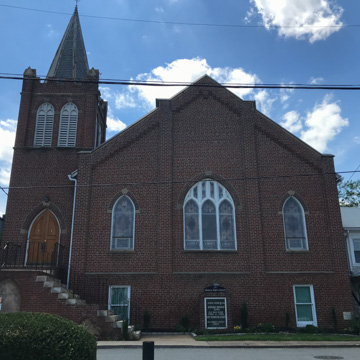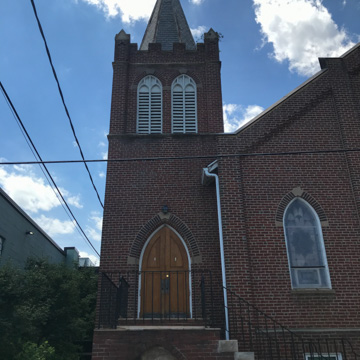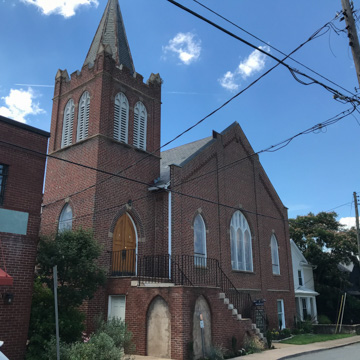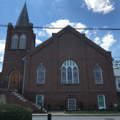The congregation split off from Mount Zion and c. 1884 constructed a building on this site to which Sinclair's name has been attached. That structure burned in 1907. The present church is a red brick Gothic Revival structure with a wide nave, pointed-arched windows, strip buttresses, and an attached tower on the south side. The interior follows the Baptist format of a large space with focus upon the pulpit. Lankford, one of the first professional Black architects in the United States, was considered the dean of African American architects at the time of his death. Although the Washington, D.C.–based designer's work covered a wide range of building types, most of his projects were ecclesiastical. In 1908, Lankford was named supervising architect for the AME Church and, in that capacity, designed churches in a number of cities in the United States, including Virginia, and even abroad.
You are here
Ebenezer Baptist Church
If SAH Archipedia has been useful to you, please consider supporting it.
SAH Archipedia tells the story of the United States through its buildings, landscapes, and cities. This freely available resource empowers the public with authoritative knowledge that deepens their understanding and appreciation of the built environment. But the Society of Architectural Historians, which created SAH Archipedia with University of Virginia Press, needs your support to maintain the high-caliber research, writing, photography, cartography, editing, design, and programming that make SAH Archipedia a trusted online resource available to all who value the history of place, heritage tourism, and learning.








